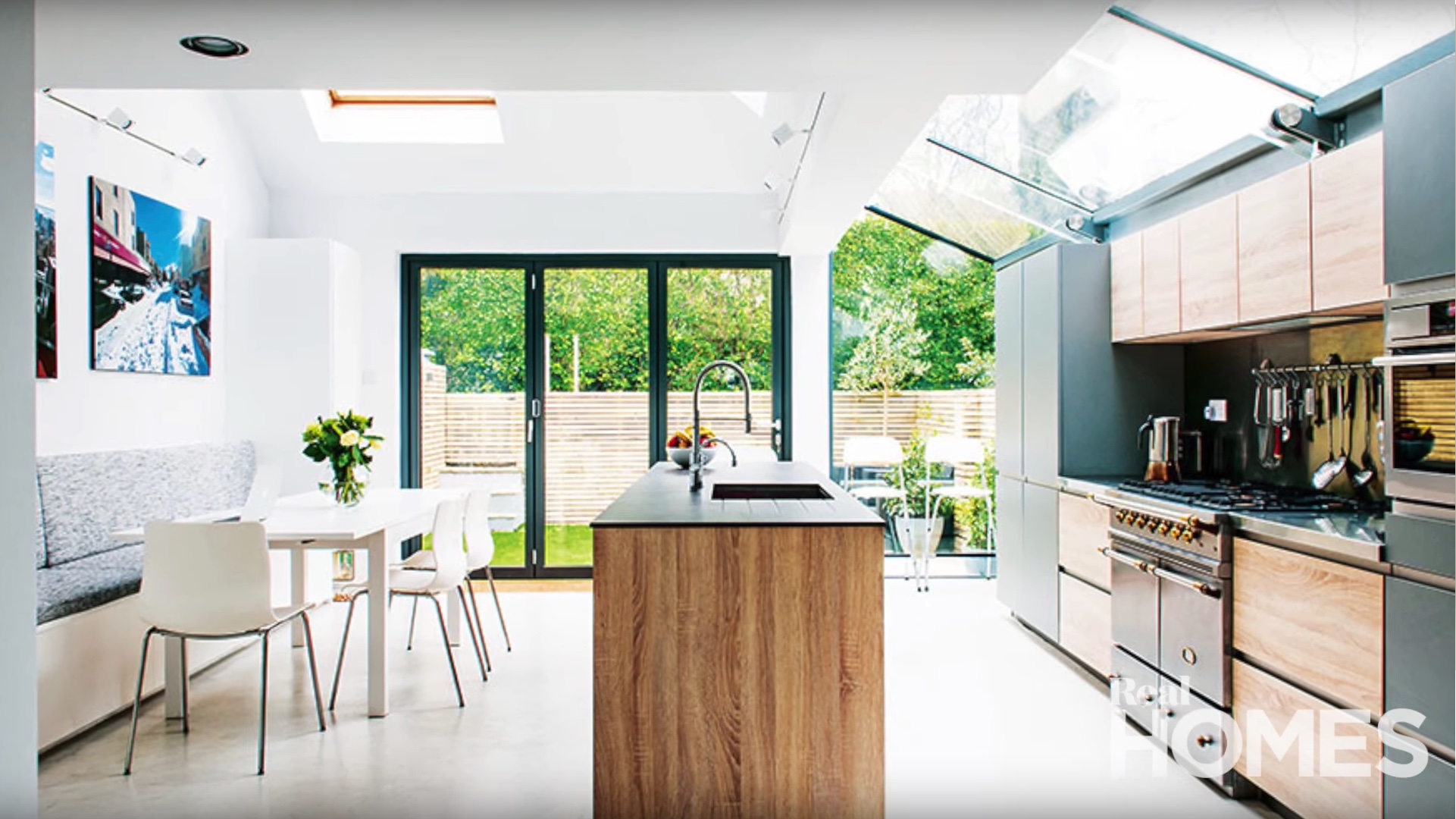
Maximising daylight makes a room feel not just brighter, but bigger and more welcoming, too. So whether you're renovating your home, adding an extension or simply looking for clever design tricks to make the most of natural daylight, you've come to the right place. Here, we run through the best ways to create a light-filled home, and tell you how to achieve them.
Looking for more design tips? Visit our dedicated page.
Add rooflights to bring in bright, bright top light
'Skylights can easily and quickly be installed in both flat and pitched roofs, and this does not usually require planning permission. They can allow far more light to flood into the room, all through the day, than you get with regular, vertical windows,’ advises architect Jane Burnside.
In fact, 'top light', as it's known, is more than three times brighter than the light that penetrates vertical windows, so if there's an opportunity to add a rooflight – even over an upper hallway which will drench the whole space below with natural daylight – it's worth taking it.

This trick can work well in windowless rooms, too, by way of a sunpipe (see below). Even narrow designs can bring lots of natural light into a formerly dark space.
The best news? Off-the-shelf rooflights and sunpipes are not expensive to buy or install. Before you start work, double check with your local council that what you're planning doesn't need permission.
Read more about choosing rooflights and installing sunpipes in our guides.
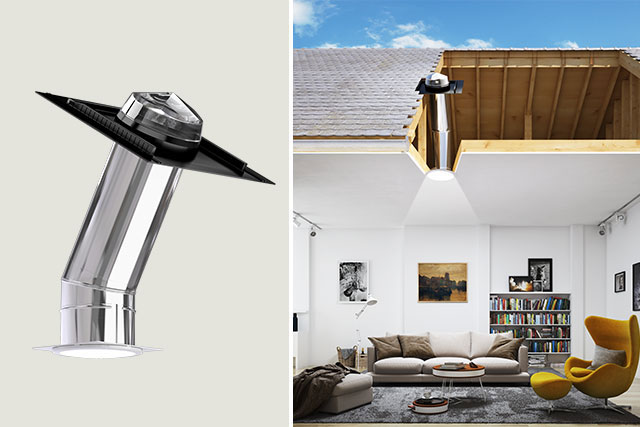
Sunpipe by Monodraught
Install new windows or enlarge existing windows
If there's an opportunity to add a new vertical window, particularly one that faces east, south or west to catch the sunlight, this should be considered, too. Bear in mind that this job, while worthwhile, will be significantly more expensive than adding a rooflight or sunpipe.
'You do not normally need planning permission to replace, alter or add new windows to introduce more natural light into your house, providing your permitted development rights have not been removed or restricted for our home,' advises architect Mary Hewett. 'However, it is always worth checking with your local authority. There is one important restriction: unless you get planning permission, any new side-facing first-floor windows will have to be obscure-glazed, to protect your neighbours’ privacy.'
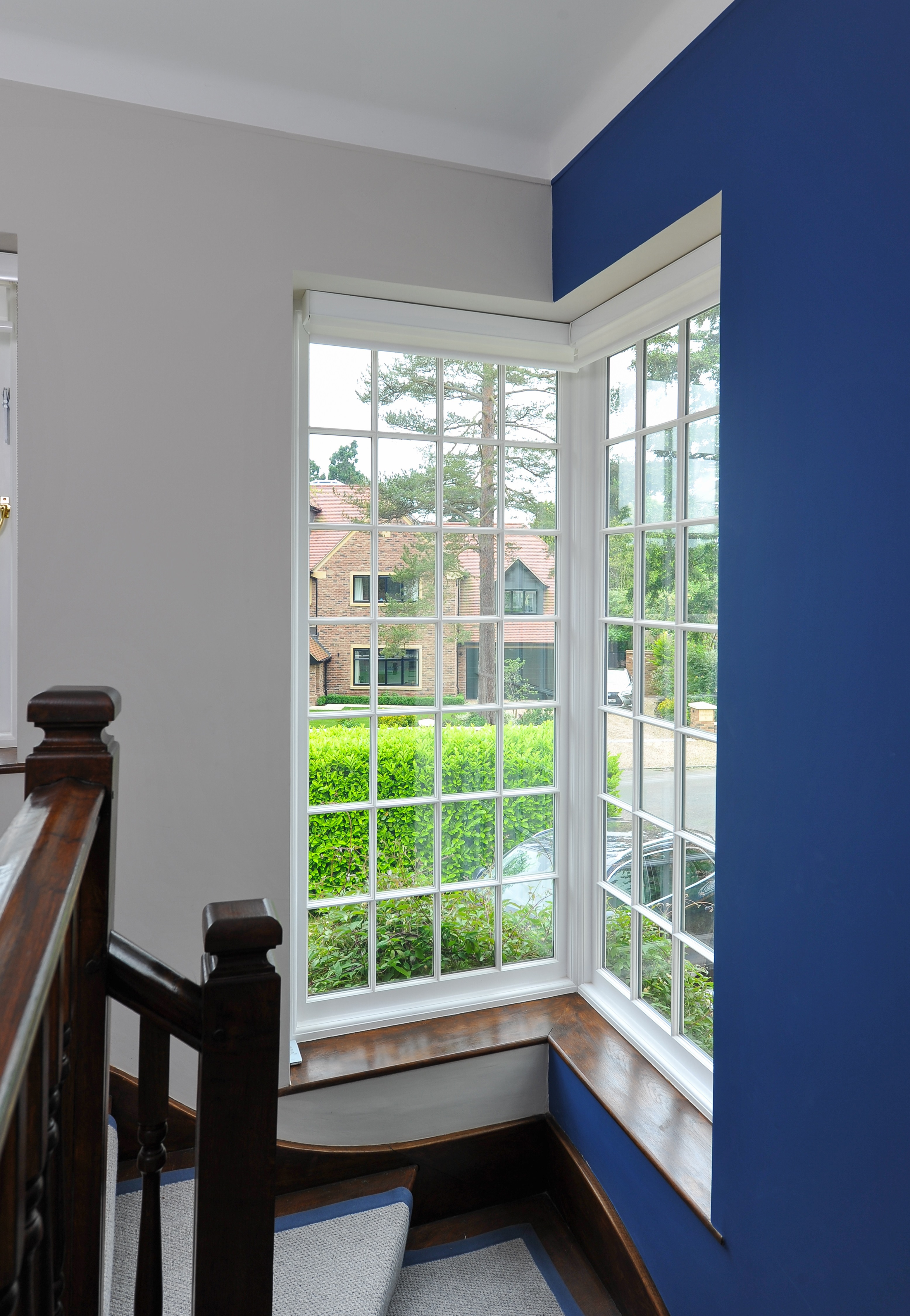
Where windows and doors are completely replaced in existing dwellings, as opposed to repaired, they must comply with the up-to date building regulations Part L for conservation of fuel and power – so you will have to contact your council's building control department.
Whether you are undertaking the work yourself or using a builder, your local authority must be notified and you will have to pay a fee for them to inspect. On completion, you will receive a certificate of compliance. If, however, you use an installer registered with FENSA, then the company can issue a certificate of compliance itself under the self-assessment scheme.
Note that a compliance certificate will be required by the purchaser’s solicitor when you come to sell the property on.
Open up to the garden with large glazed doors
Whether you choose contemporary bi-fold or sliding doors, or more traditional French doors, opening up the back of the house – usually replacing a window – to the garden will not just make the room brighter, it will connect it to the garden year-round, making it feel larger, too.
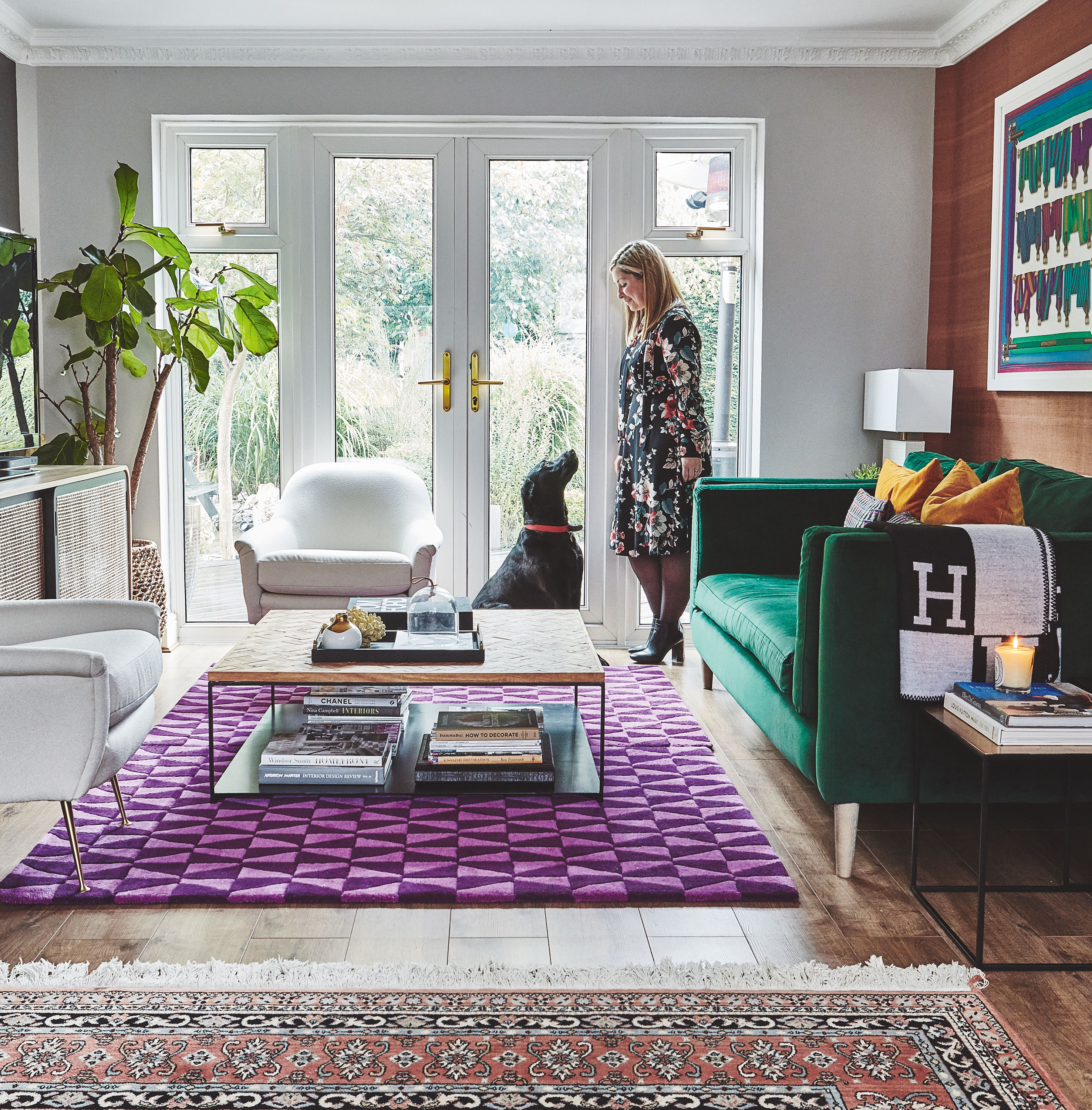
For maximum daylight penetration, pick doors with slim framing – although bear in mind that these will look very contemporary, so may not suit your room if yours is a period home. 'Slim window frames allow in the maximum daylight without unduly obstructing the view. Alternatively, frameless glazing does away with any kind of supporting framework, by attaching glass to glass directly with silicone – the perfect solution for corner windows,' advises architect Jane Burnside.
Even painting existing door frames – and window frames for that matter – in a bright white can have a lightening effect on a room.
Fit glass floors and staircases
An expensive option, but impactful, glazed flooring can allow light down into a basement, while glazed staircases will make a dark corridor much brighter. Done properly, the effects are comparable to an above-ground window-lit room. You'll need an architect or architectural technologist to specify this glass, or try a specialist company such as Bisca or IQ Glass.
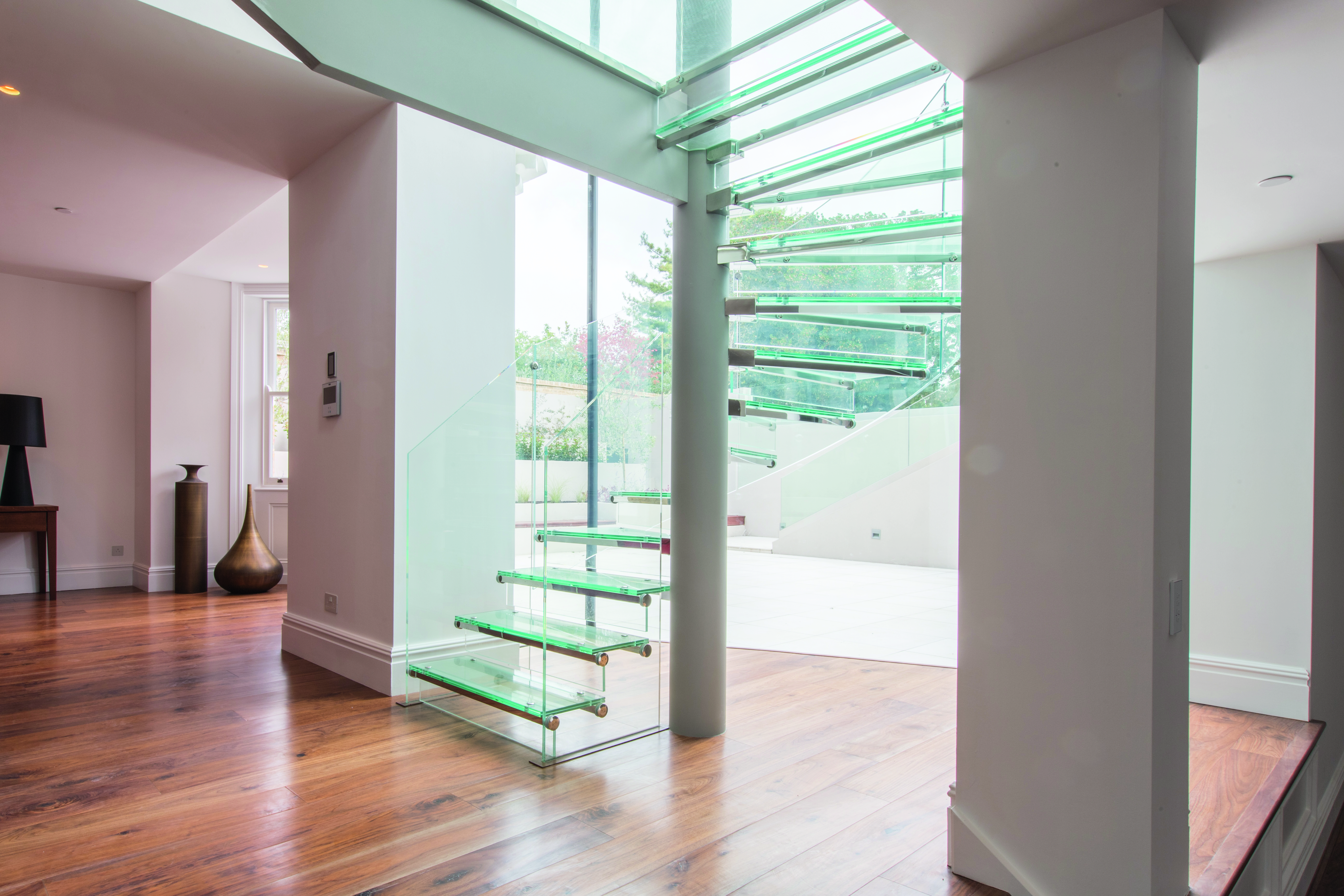
Want a cheaper option? Installing an open-tread staircase is another option, and can be designed to suit both contemporary and traditional homes. Looking for a budget alternative? Even painting original pine stairs in a light-reflecting colour can make your hallway feel brighter (more on that later).
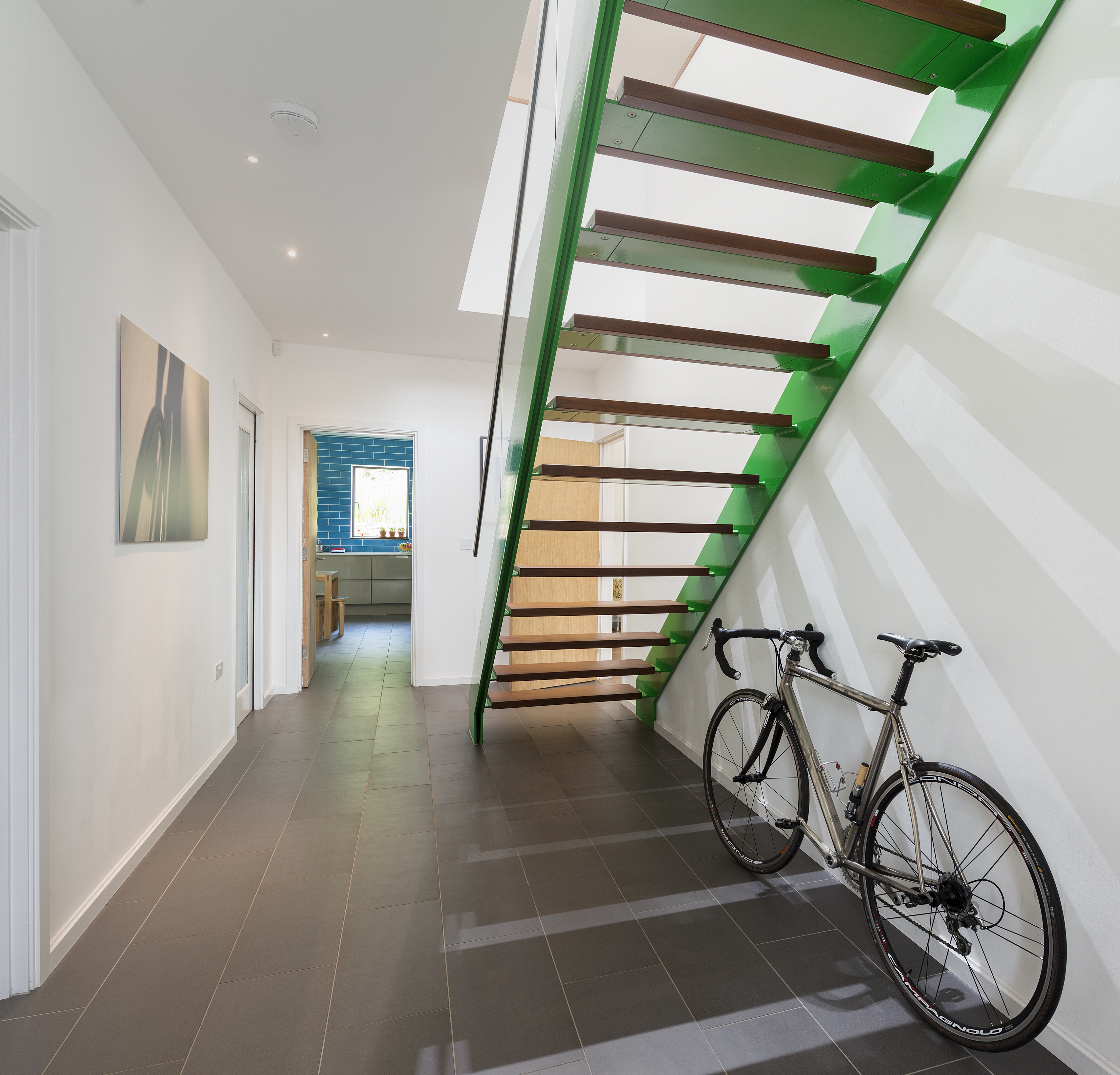
Including a courtyard in your remodel
If you’re planning a full remodel, then including an interior courtyard may be an option. When extending a home, many people only have the option to add the new space directly on to the rear, side or top of their property, but a blessed few might have a plot which is large enough to accommodate a horse-shoe or quadrangle. This not only has the benefit of preventing a large, lightless interior space, but can also blur the lines between outside and inside in the rooms that border the courtyard.
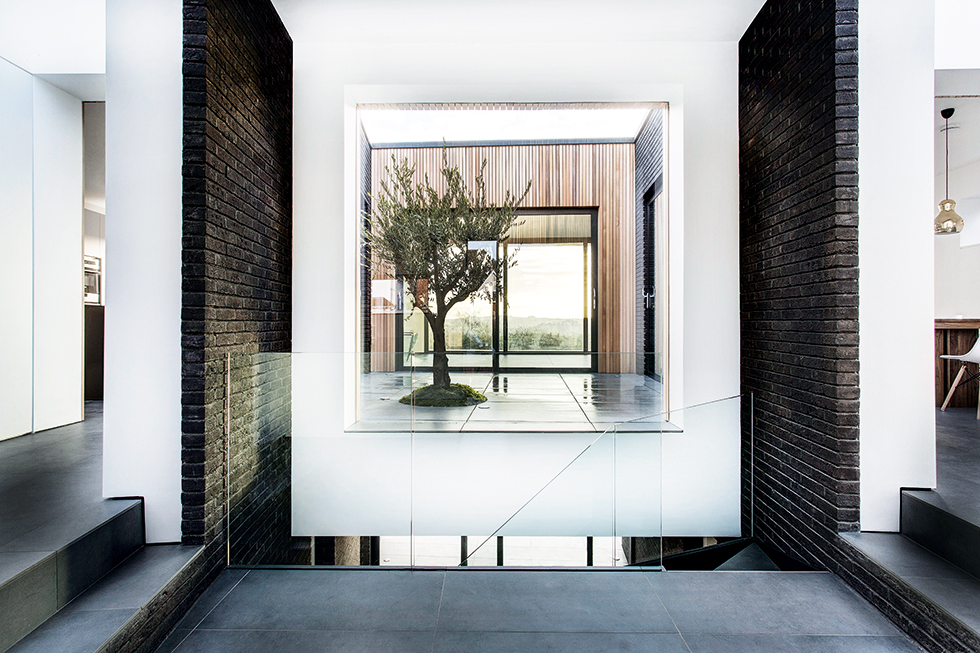
The internal courtyard in this home by AR Design has been nicknamed the Zen Garden. It brings natural light and fresh air into the first-floor rooms
Again, for those with basements, a sunken courtyard can bring in light in an innovative way. Particularly striking examples of sunken courtyards have trees or water features climbing from the space.
Add a glazed extension
If you're considering extending your home, opting for a glazed addition is a sensible choice, particularly if you're extending into a lower ground floor or a narrow space where the natural daylight is somewhat limited anyway.
'A 2m x 4m glass box with a front height of 2.5m can cost from around £30,000 to £36,000 – allow £1,100 to £1,300 per m² of glass. It will be maintenance-free and won’t require decoration like a typical extension,' says Fiona Sharman of Cantifix, architectural glass and structural glazing specialists.
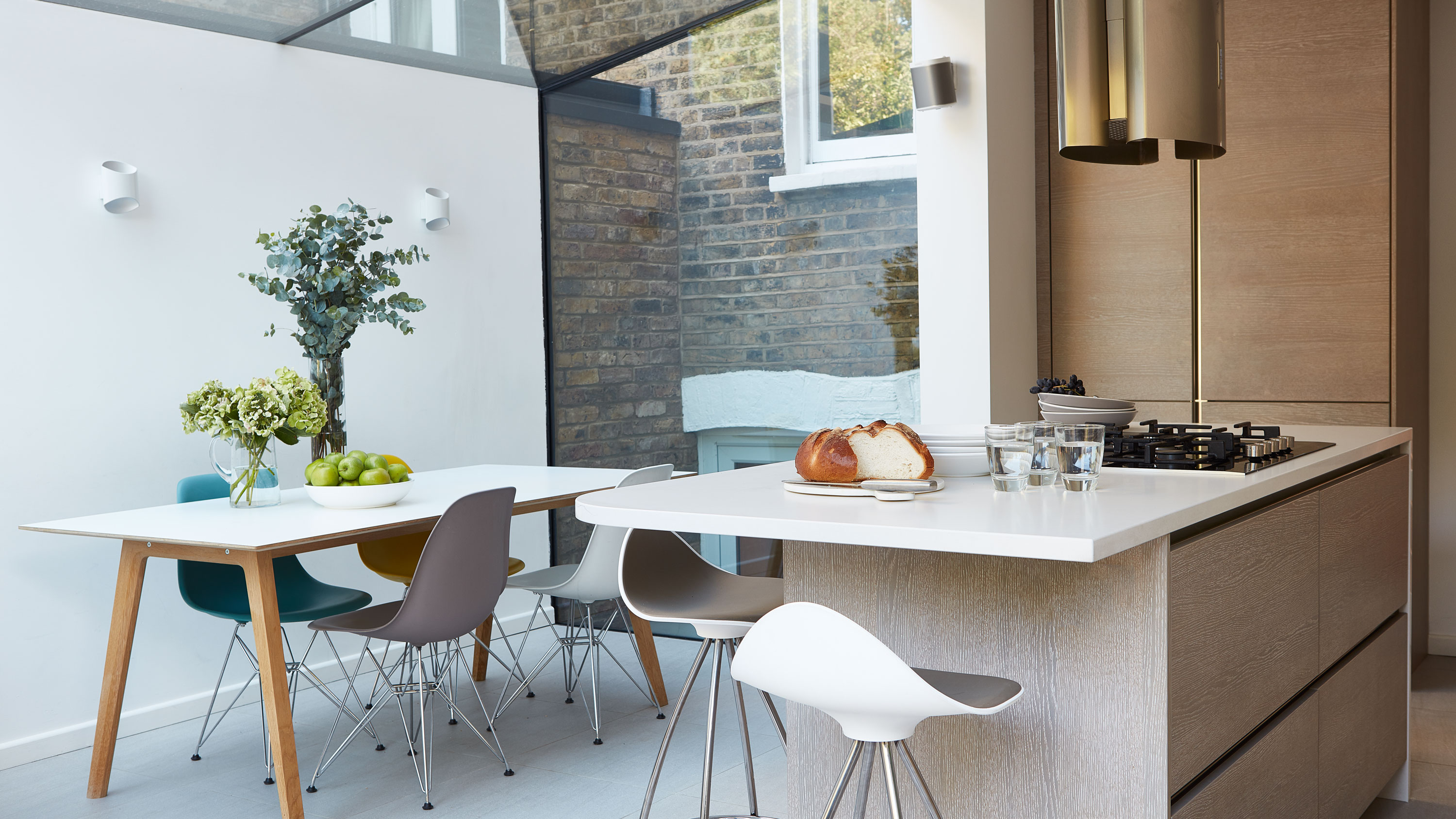
'The glass used must be high-performance, to limit the extremes of temperature within the room. Building regulations permit glass with a U-value – a measurement, in W per m²K, of thermal transmittance for energy-efficiency – of up to 1.8W per m²K. This value should, though, be closer to 1.1W per m²K for minimal heat wastage and all-year-round comfort.
'There is considerable preoccupation with the notion of heat loss through glass, but the heat gain on cold, sunny days far outweighs any heat loss in dark winter months. The overall heating costs of your home will be reduced by the addition of an efficiently insulated glass box.'
Find out more about how to plan and design a glass extension in our guide; for more traditional homes a conservatory or sunroom may be more appropriate, as will an orangery.
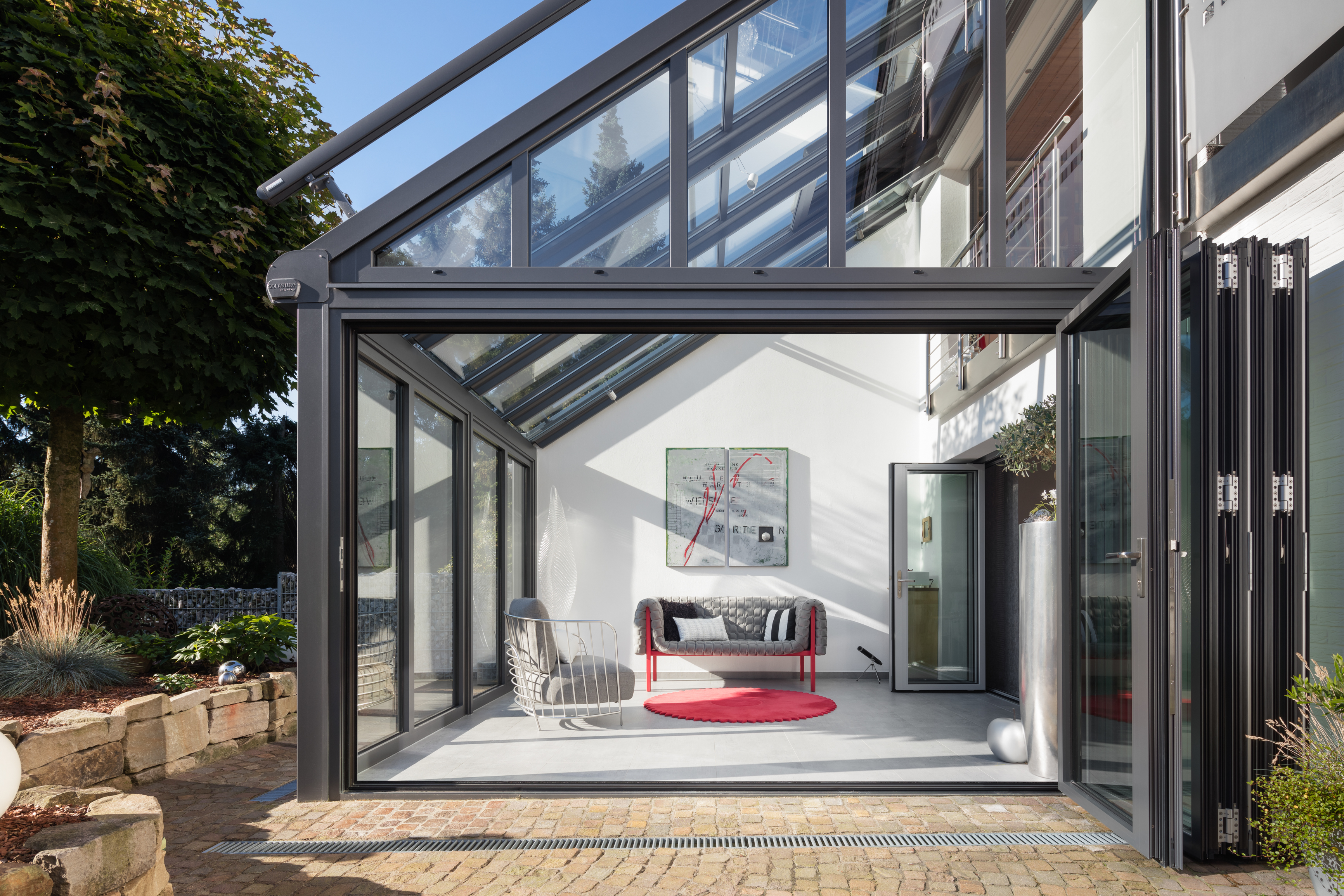
Choose self-cleaning glass
Some areas of glass in the home, such as rooflights, can prove difficult to reach for cleaning and maintenance. Manufacturers have attempted to solve this problem by producing coating and treatment options that modify the surface. These can be applied either during, or after, manufacture and are intended for both internal and external surfaces. The correct product must be applied depending on the location of the glass.
Photo-catalytic coatings are often described as ‘self-cleaning’ – when exposed to natural light, the coating breaks down organic dirt deposits, such as bird droppings, and the loosened dirt is washed away by rainwater. The glass needs little maintenance and dries rapidly, so it’s especially beneficial in difficult-to-reach areas such as conservatory roofs.
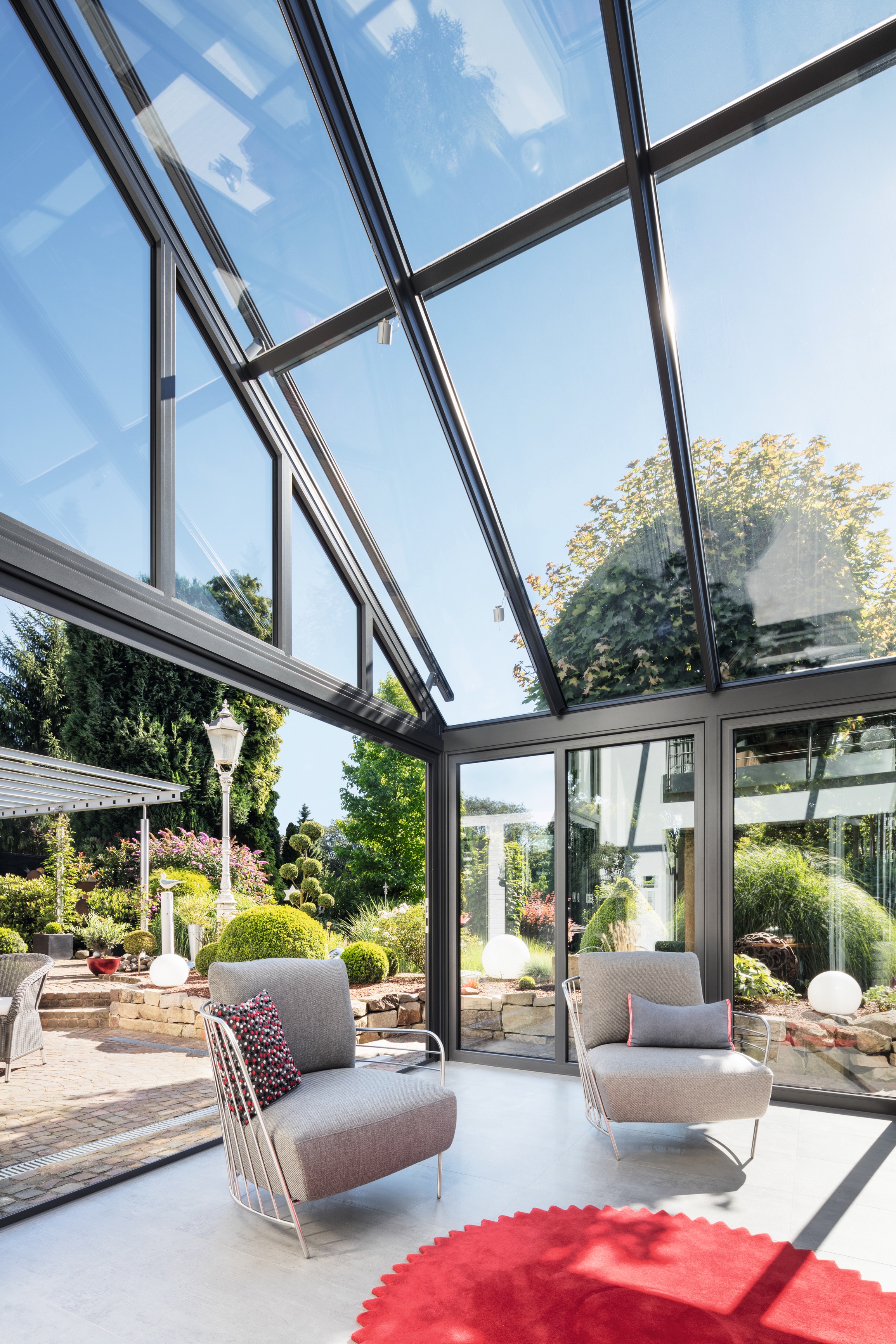
This solution – which cannot be retrospectively applied to glass – works best on surfaces at an incline of more than 30 degrees (at least ten degrees is always required) and exposed to daylight and rain, otherwise the structure must be watered down manually.
Polymeric resins – also known as non-stick or easy-clean treatments – work by minimising the accumulation of dirt on the surface of the glass, making it easier to clean. The need for regular washing is decreased and the glass is protected against dust and grit abrasion, staining and discolouration.
The performance is continuous and doesn’t rely on sunlight or rainfall, and polymer resin treatments can be reapplied in situ as and when required. These products, available from companies such as Ritec International, can be used for both internal and external glass, and can be applied retrospectively.
Retain privacy while bringing in maximum daylight
Use glazing to create a broken plan layout
The use of textured, patterned and decorative glass allows scattered light to come in while distorting the view from both sides. Typically found in bathrooms and kitchens, it can also be used creatively to divide rooms – in other words, creating a 'broken-plan' layout.
'Another option is white diffusing glass, which comes in a number of forms – from an acid-etched or sandblasted finish to layered panes with a white translucent component. Laminated glass comprises a wide range of coloured inter-layers, including translucent white, and the glass surface is smooth rather than textured,' says Kristian Chalmers of Pilkington.

'The challenge is finding the right glazing for where privacy is paramount but vision is still required. A combination of glass with either a reflective coating and/or a tint, will make it more difficult to see into a room from the outside. Many glazing solutions are permanent, as privacy characteristics are a feature of the glass and the amount of distortion varies with the pattern.
Choose patterned or sandblasted glass
‘Remember that in a bathroom it’s essential to install a window covering, such as blinds, even with patterned glass, because when it’s dark outside and the lights are turned on, privacy will be considerably reduced.'
Fit window film to retain privacy and light
A cheaper, easier option altogether? Window film, which can be retrospectively applied to windows that are overlooked. Smaller expanses are easy to DIY install.
Replace solid doors with glazed ones
Another trick is to replace solid doors – both externally and internally – with those with frosted or sandblasted doors. This can work particularly well in dark en-suites or in dingy hallways.
Find out more about lightening a dark hallway in our guide.

Make better use of existing natural light with design tricks
Use mirrors
'Mirrors are a great way of reflecting natural light. As well as using wall-mounted mirrors, which create a great focal point, also consider mirrored furniture to maximise daylight,' says interior designer Kelly Hoppen.
Choose lightweight fabrics
'Another trick is to use sheer, lightweight fabric for large windows, to allow the maximum amount of natural light to flow through your rooms while bringing warmth and texture to the space.'
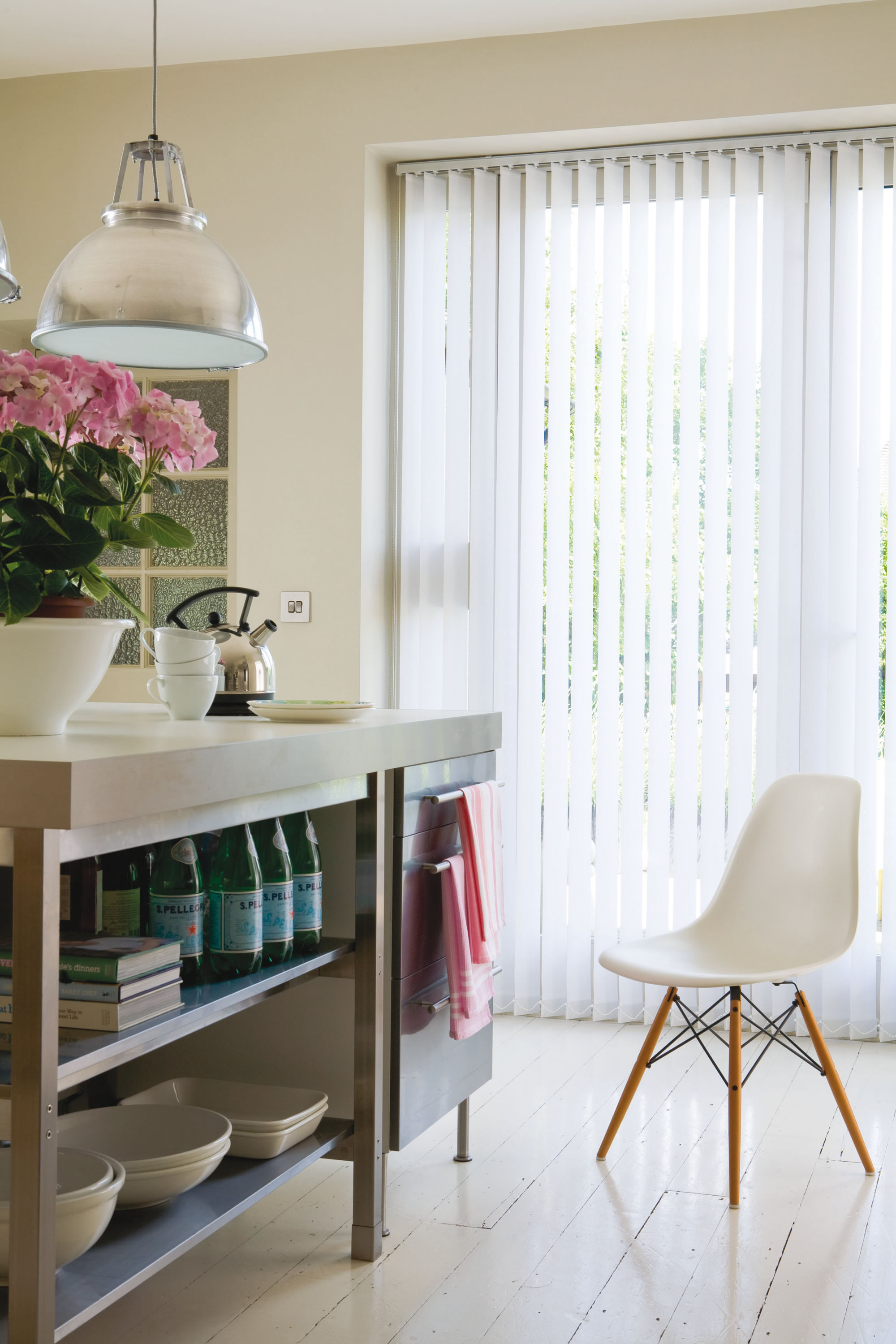
Choose a pale colour scheme
'Keep your colour palette light,' continues Kelly. 'White and pale colours will reflect the light, while warm colours will absorb it. Use fabric with metallic accents, such as linens with silver weaves, to create highlights within the space.
Pick shutters for windows
'If you choose shutters, a wide-slat design will allow the most natural light to stream in, while also offering privacy as required.'
Use our guide to window shutters to choose the best for your space.
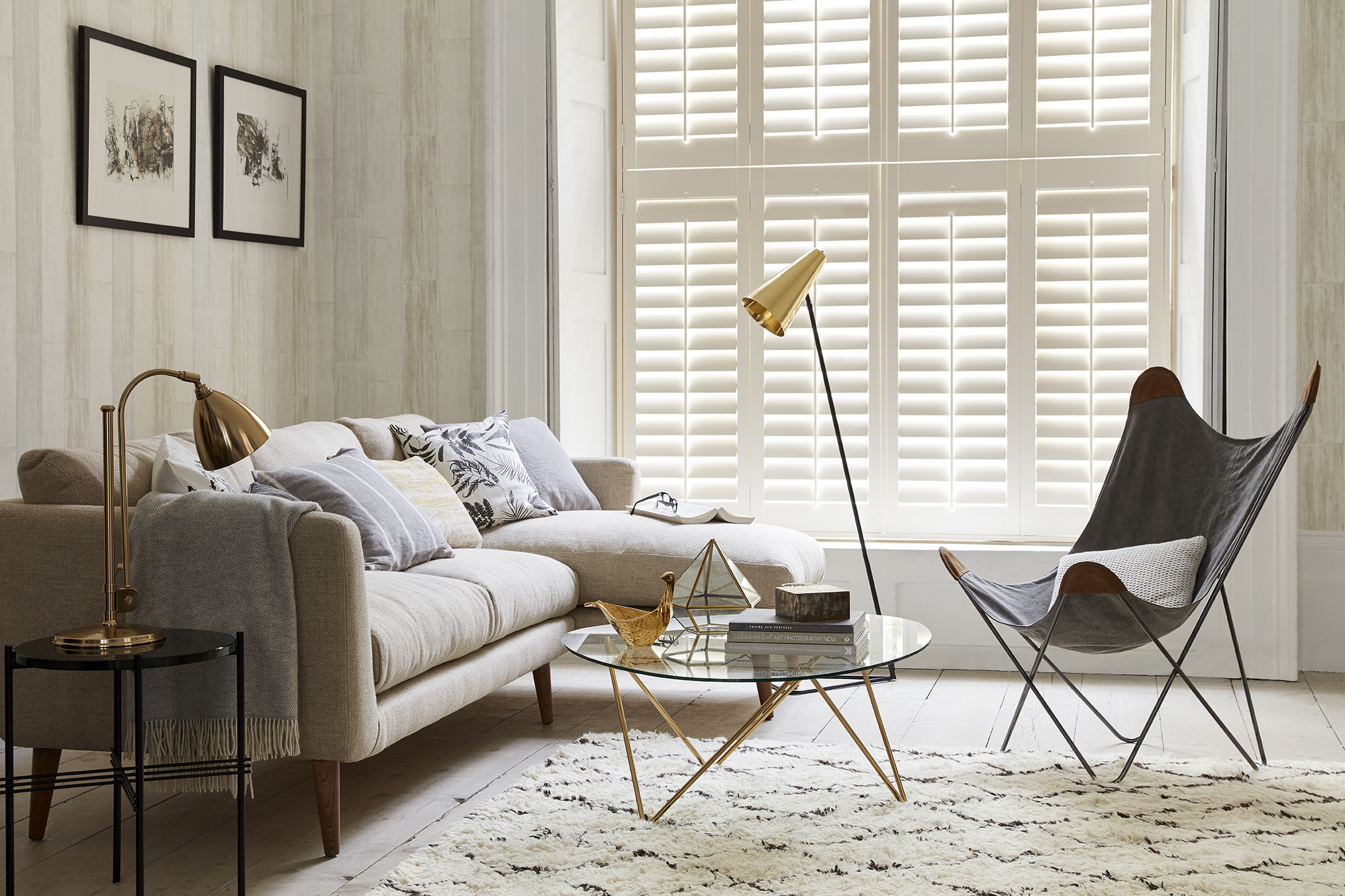
Pick reflective flooring
'Finally, choose a hard floor with a polished finish, whether this is wood flooring or stone, as this will bounce light around the room. Carpet isn’t reflective, so if it is a must for comfort, try inlaying it into a wooden floor or add a wooden runner, to give the light somewhere to reflect off.’
Be inspired by our white bedroom ideas and our white kitchen ideas to create a light, bright space in a daylight-starved room.
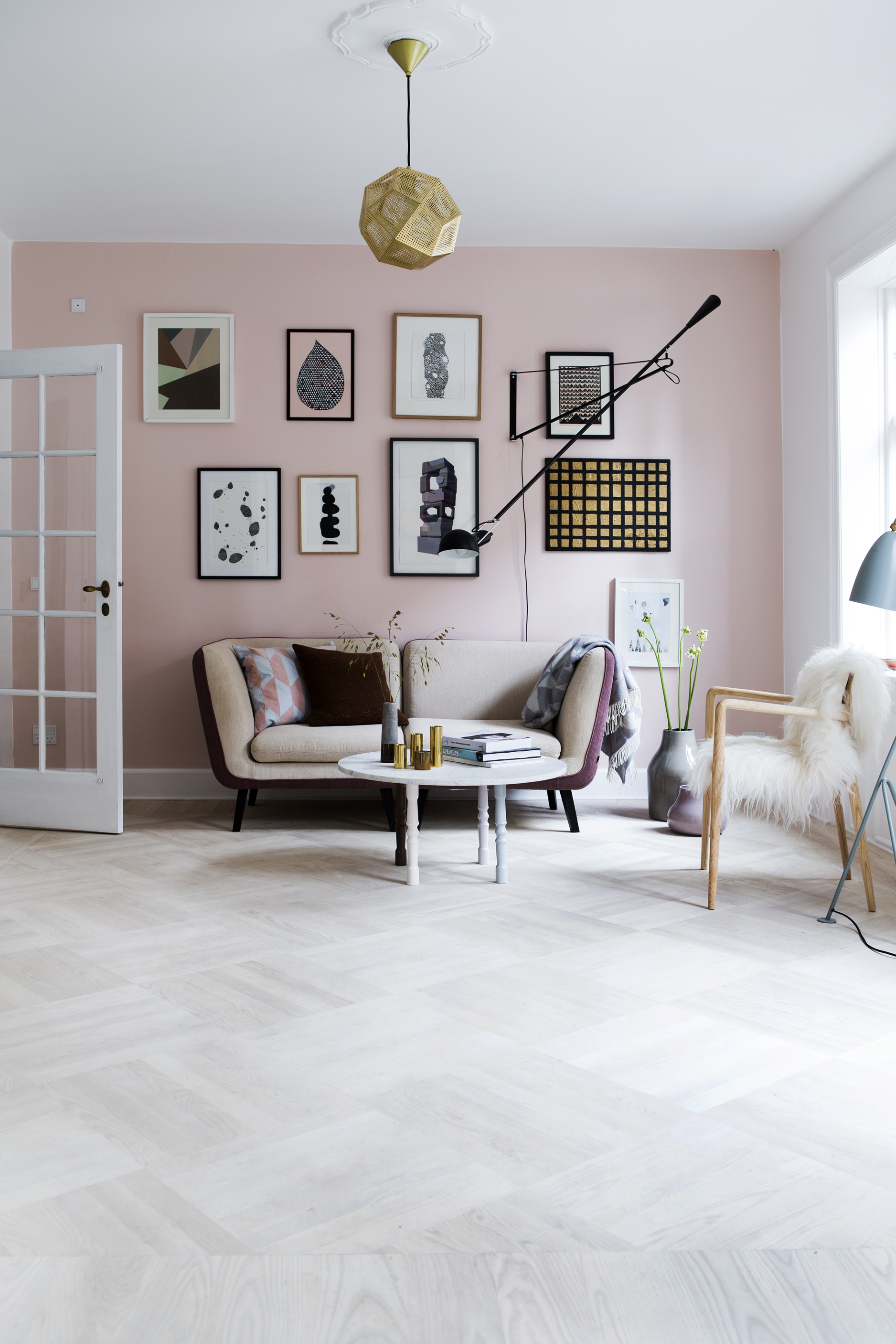
Redesign your layout to make use of natural light
Track the sun
'Understanding how the sun moves round your home will allow you to plan your layout to follow it throughout the day. For example, try eating breakfast in an east-facing room and spend evenings in a west-facing space, to capture the sunset,' advises architect Jane Burnside.
Pick south-facing rooms for living
'Typically, people associate south-facing windows with enjoying the best natural (warm-toned) light. In response, many house builders locate their main living rooms to the south, specifying larger windows to increase the sun’s rays.' Consider this when extending – or indeed buying – a house.
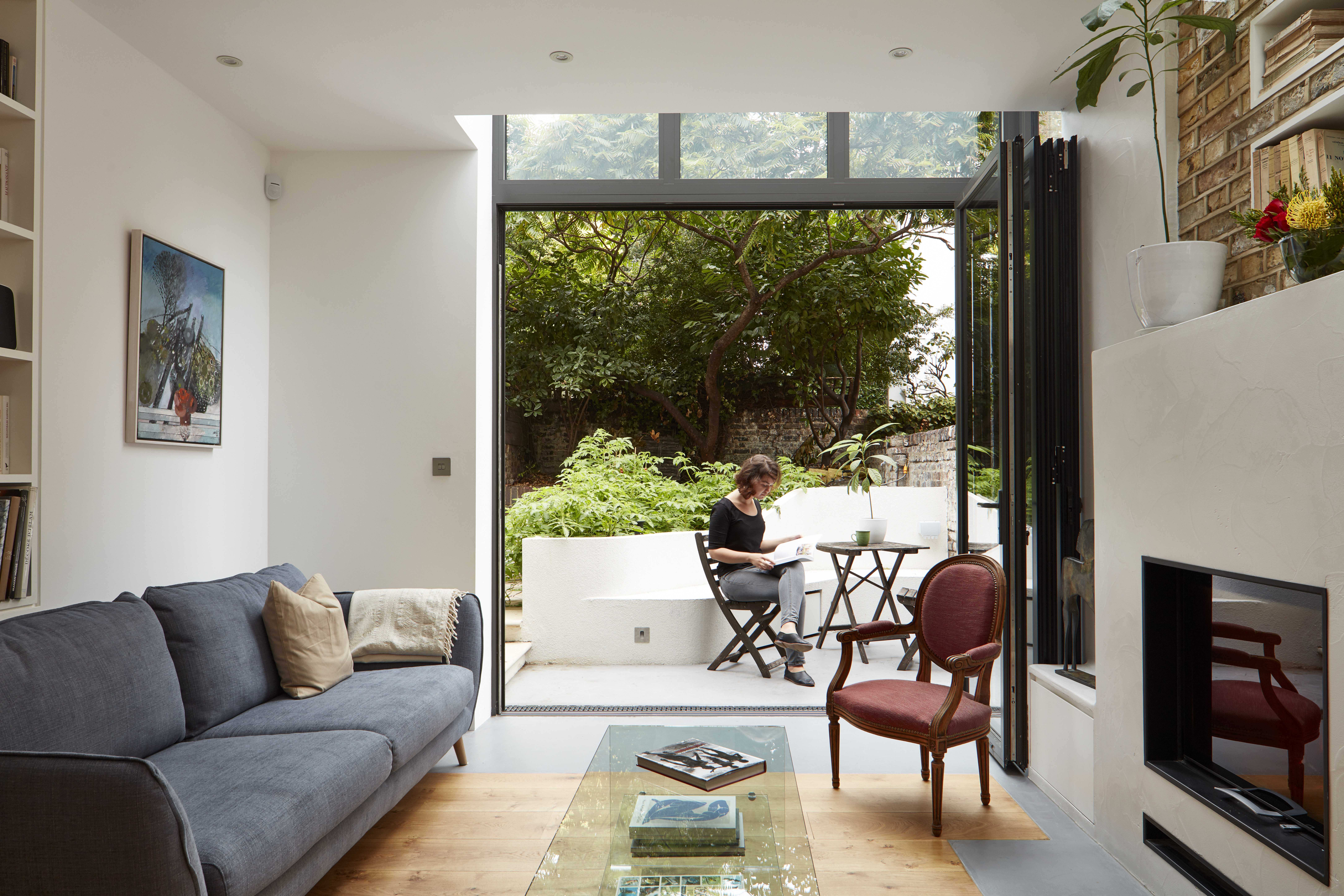
Decorate north-facing rooms cleverly
'North-facing rooms need special attention. Northern light is a pure, blue-toned light that can make a room appear cold, continues Jane Burnside. 'Service spaces, such as utilities and bathrooms, are frequently positioned to the north with smaller windows, to prevent the areas from becoming cold due to heat loss.'
However, you can make north-facing rooms feel brighter and warmer – use our tricks to find out how.
Knock through to borrow light
Knocking through to create an open plan layout can allow the darker of the rooms to borrow daylight from the lighter. 'Introducing windows on two sides of a room will not only create a double aspect, but will also ensure that the space is well lit throughout the day,' continues Jane Burnside.
Alternatively, why not create glassless ‘windows’ between rooms so that light (and conversation) can travel from room to room without having to physically remove the whole wall?
Where walls can be removed, but you still want the feeling of separate zones, try zoning the space instead. Use a half wall, or three-quarter-height stud wall if you want a visual barrier, or even use furniture to break up the space. Colour, flooring and even floor levels can also be used to define areas in a space.
Find out more about creating a successful open plan layout in our expert guide.
More light-enhancing tricks and tips:
- The best smart lighten gadgets to brighten your home
- How to plan kitchen lighting
- How to choose the perfect paint colours for every room in your home
Join our newsletter
Get small space home decor ideas, celeb inspiration, DIY tips and more, straight to your inbox!
-
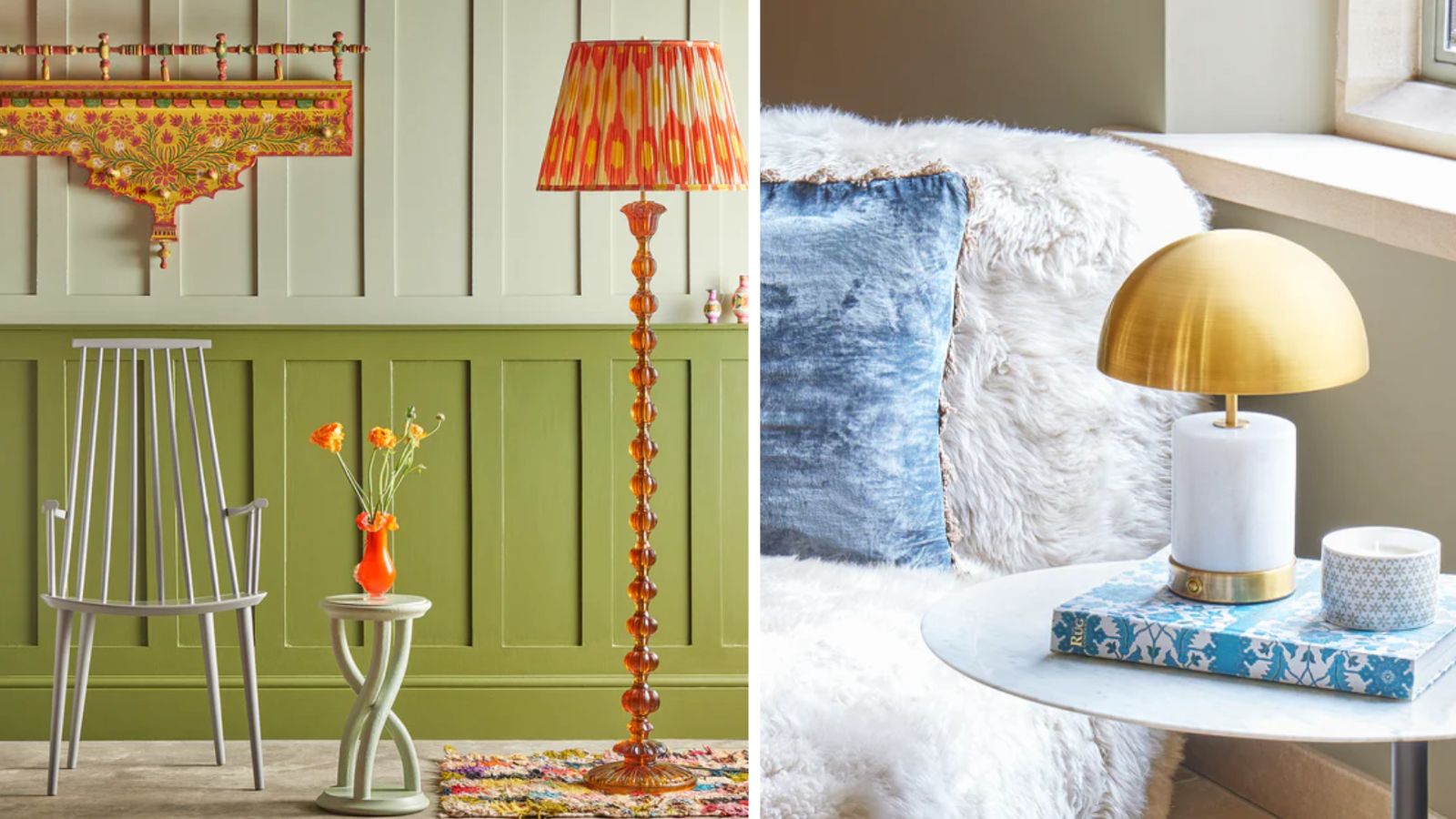 Pooky Lights' USA launch has dropped, and we're swooning over the cute lamps — shop our favorites from $150
Pooky Lights' USA launch has dropped, and we're swooning over the cute lamps — shop our favorites from $150Pooky Lights' USA launch has dropped — check out our favorite buys from $150
By Danielle Valente Published
-
 Melissa Joan Hart's hanging outdoor lights have inspired us to get creative with our backyard ideas this spring
Melissa Joan Hart's hanging outdoor lights have inspired us to get creative with our backyard ideas this springMelissa Joan Hart's hanging outdoor lights gave us inspo for our spring backyard ideas — bring in the festoon look with tips from an interior designer and lighting expert
By Danielle Valente Published
-
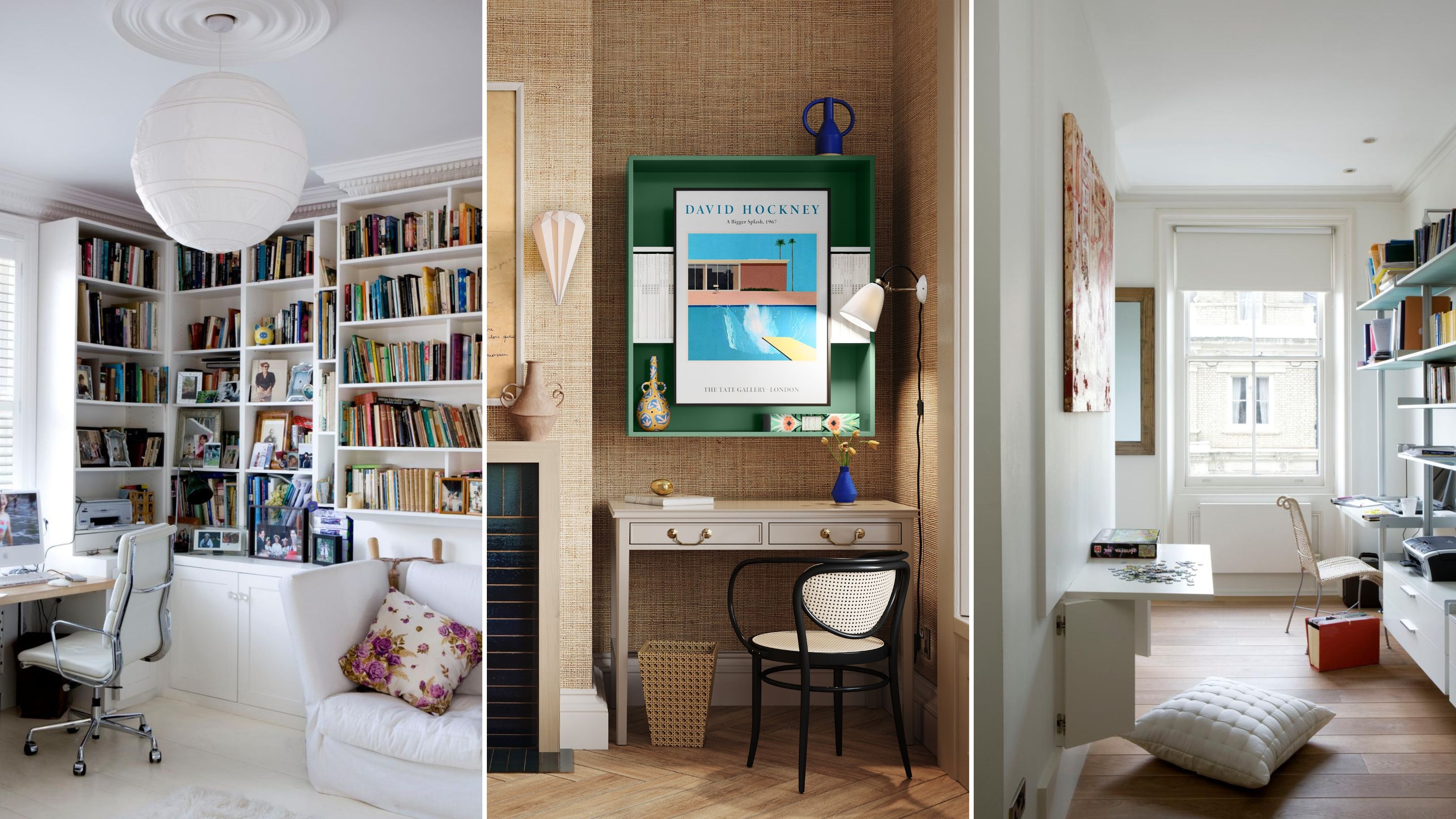 Small office lighting ideas — 7 ways design experts glow up WFH spaces
Small office lighting ideas — 7 ways design experts glow up WFH spacesLooking for small office lighting ideas? We've spoken with designers to find out what they do to brighten up this room, plus picked out lovely buys
By Eve Smallman Published
-
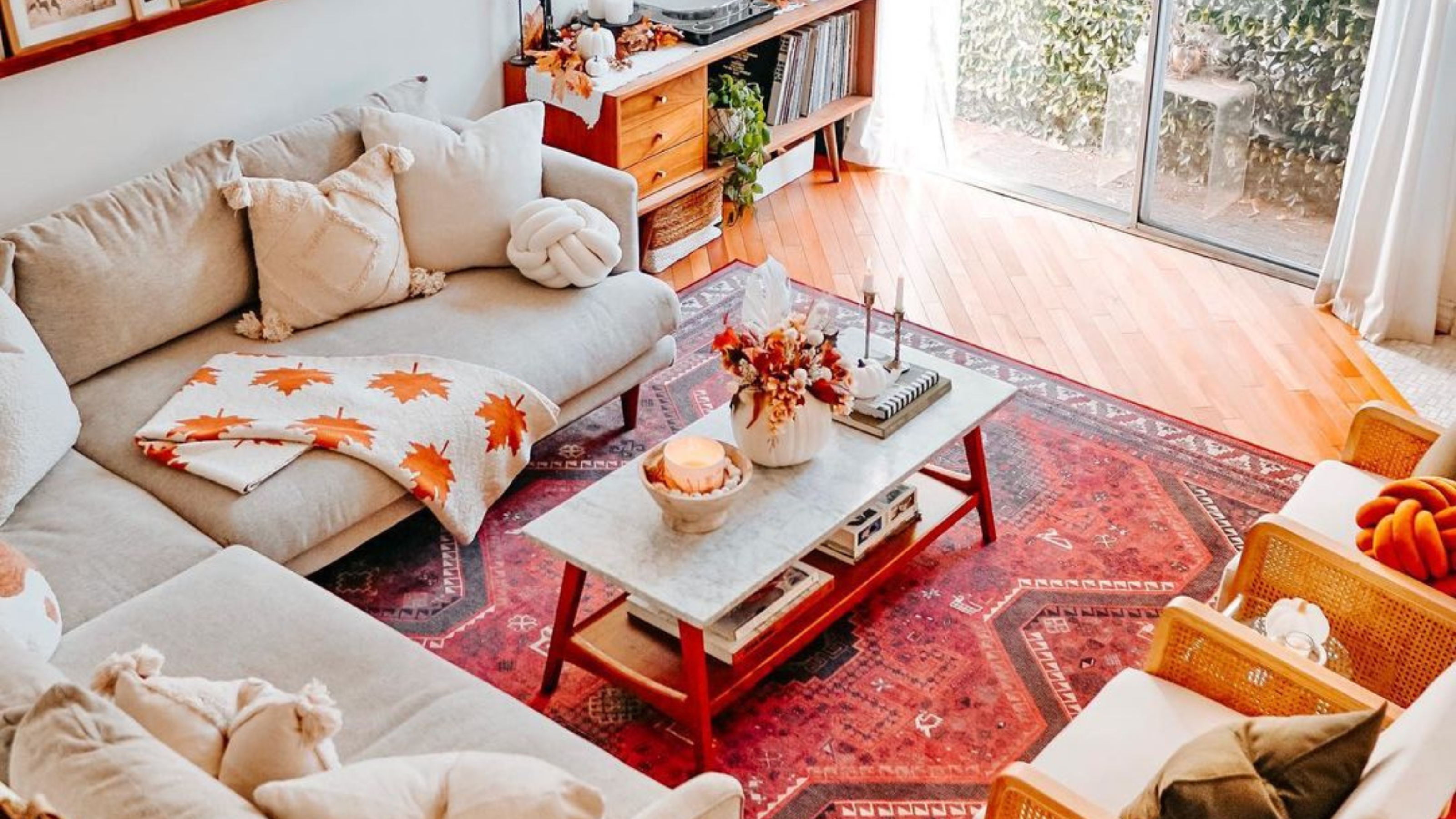 How to save on energy in a small space — 6 money-saving tricks from industry experts
How to save on energy in a small space — 6 money-saving tricks from industry expertsThis advice won't just save on energy in your small space — it will help you cut costs, too. We spoke to scientists and construction experts to find out how
By Beth Mahoney Published
-
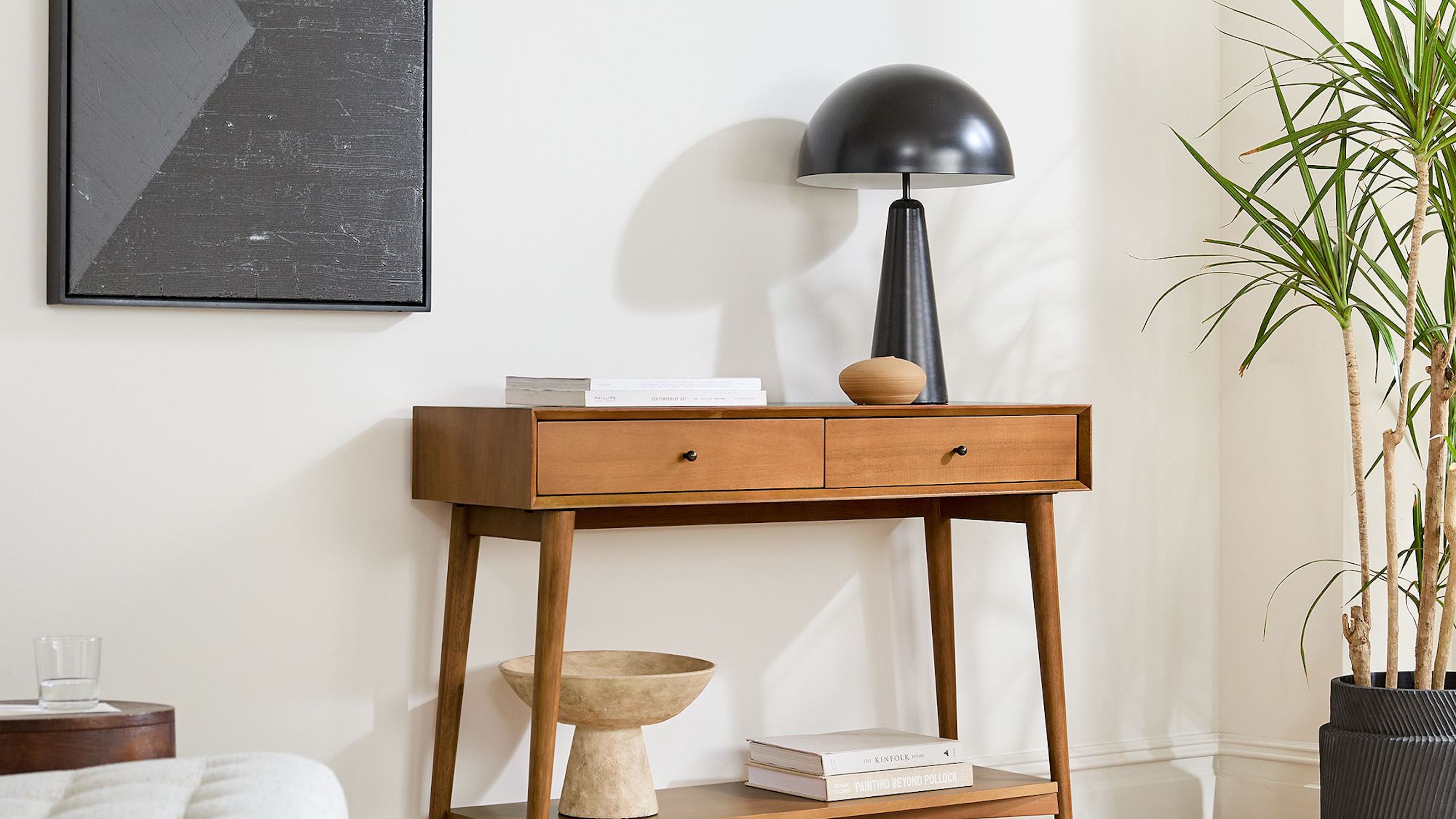 9 small entryway lighting ideas to brighten your home
9 small entryway lighting ideas to brighten your homeSee the best small entryway lighting ideas to brighten up your home. We found floor lamps, pendant lights, and more to add to your entrance.
By Kate Santos Published
-
 These 9 string lights for dorms will give your small space a glow-up it deserves — from $6
These 9 string lights for dorms will give your small space a glow-up it deserves — from $6Brighten up your college space with these string lights for dorms — as rated by shoppers. See these fun accessories in a variety of colors and styles.
By Joseph Bobowicz Published
-
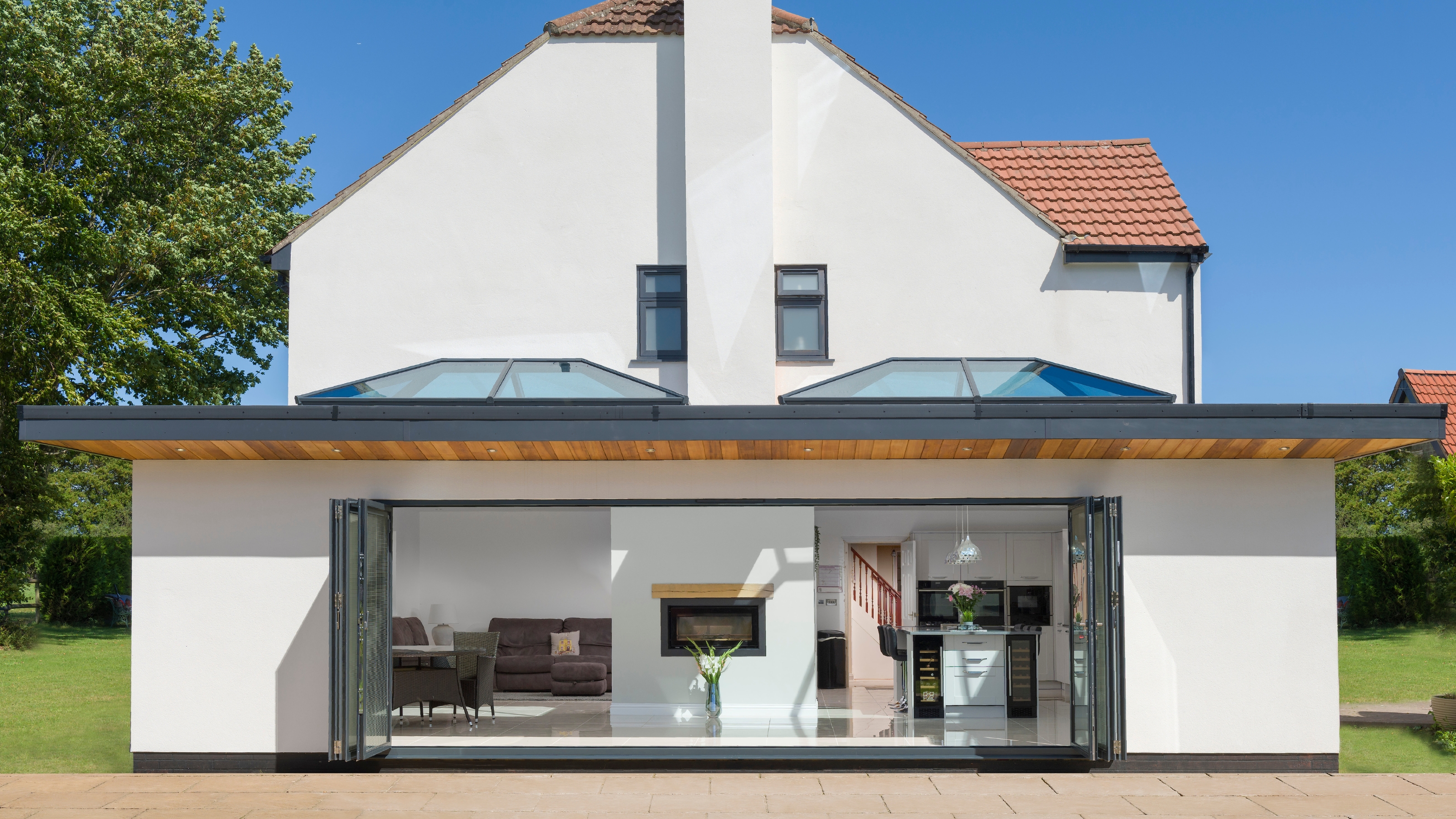 The sky's the limit with Korniche roof, flat glass, and bi-fold door products
The sky's the limit with Korniche roof, flat glass, and bi-fold door productsFive reasons to buy Korniche rooftop lanterns, flat glass, and bi-fold doors, plus where to buy these home improvement products
By Sponsored Published
-
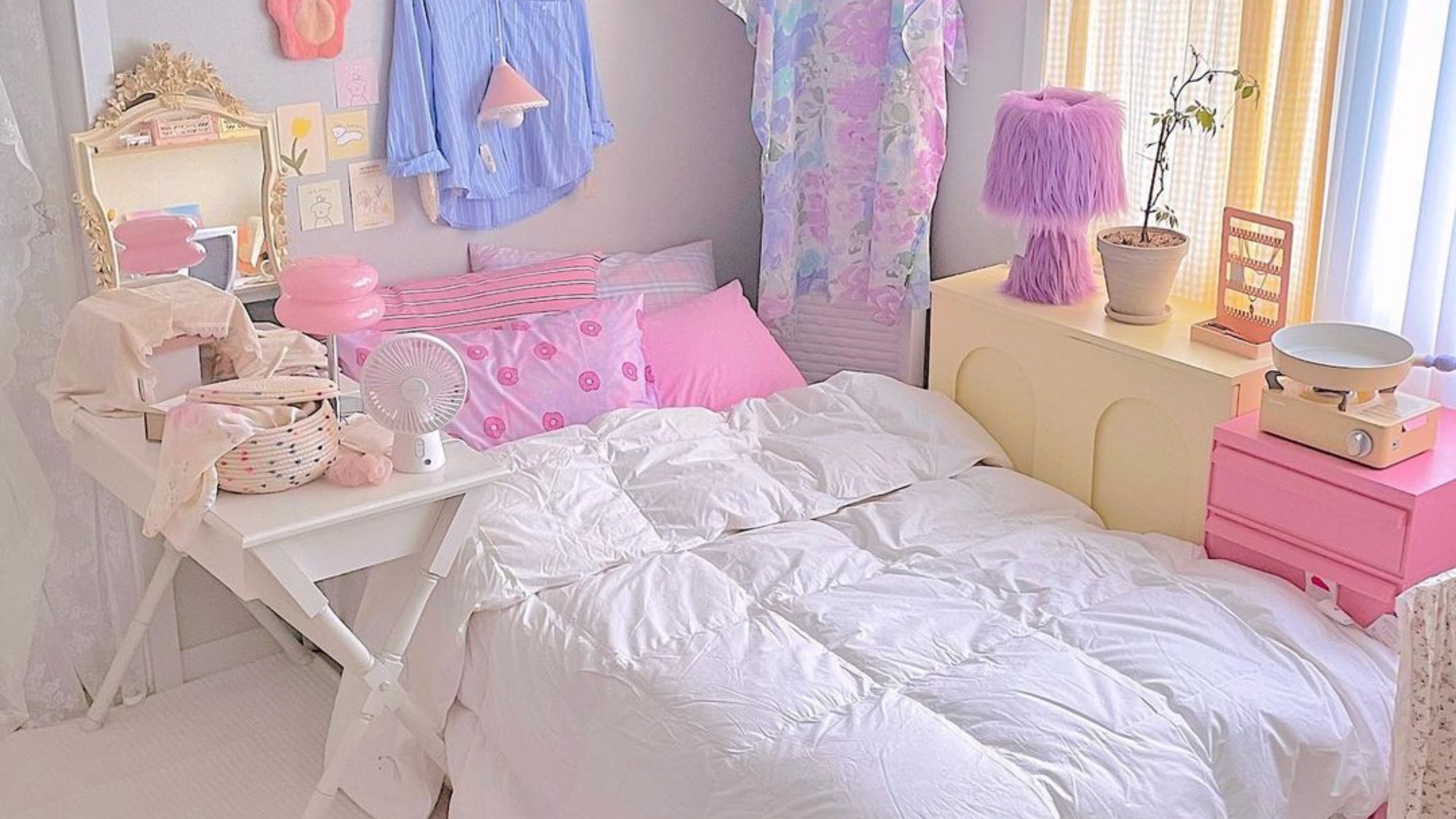 How to make a small room look bigger — 6 helpful ways
How to make a small room look bigger — 6 helpful waysSee our expert tips and tricks for making a small room look bigger. Play with simple design elements to maximize the look of your tiny apartment.
By Kara Thompson Published